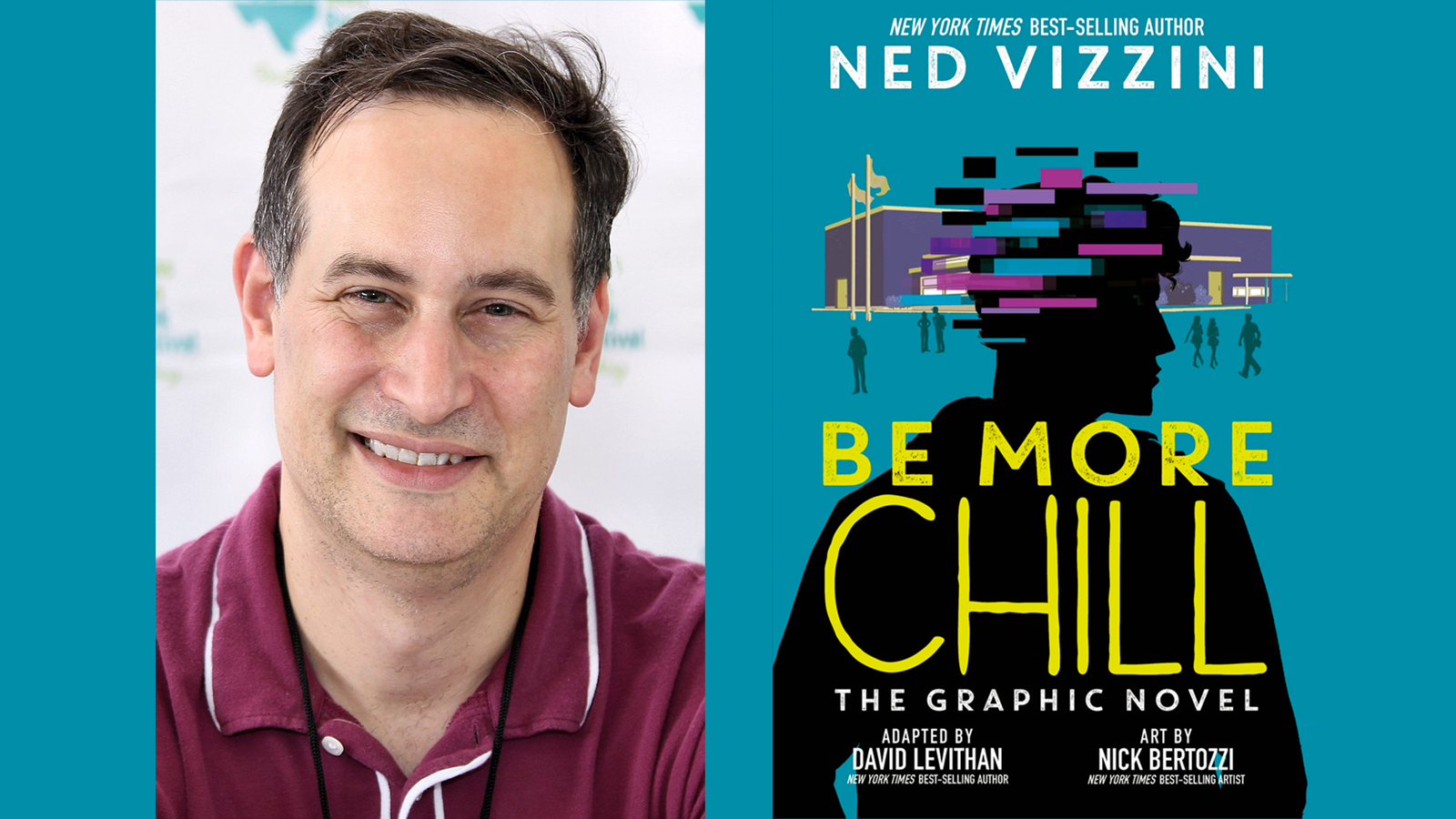I think it’s fair to say that when you’re thinking of the champions and iconic authors within the YA space, you have to mention David Levithan. His books—co-authored with some of well-known YA authors—are modern classics, also leading to adaptations and earning him well-deserved awards.
Be More Chill, his latest creative endeavor, is a graphic novel adaptation of Ned Vizzini’s novel, Be More Chill and illustrated by Nick Bertozzi. It is a fabulous, prescient graphic novel set during the early ’00s that somehow predicts the relationship that we’ll have twenty-years later with technology, while also remaining rooted in a pretty realistic story about teenagerdom, fitting in and first love.
Read on to find out how Levithan tackled adapting this beloved novel and how he stayed true to Ned Vizzini’s vision.
What do you think it is about Be More Chill that lends it to amazing adaptations in both graphic novel and musical form?
I think it’s Ned’s spectacular mix of humor, speculative fiction, right-on-target dialogue, and oddball character that ring so true because, at heart, most of us are oddballs.
I think Be More Chill is a story that so many of us can connect with no matter what format it takes. What did you first connect with in this novel?
Well, any book that can make me laugh out loud, I consider a win. But the thing that grabbed me the most was how insightful Ned was about the need to put a boundary on our dependency on technology. And keep in mind—this was in the early 00s, before smartphones! Little did I know… but Ned knew.
This book made me a bit nostalgic for early ’00s culture, especially after the hellish year of 2020. Even though it’s so firmly set then, what makes Be More Chill so timeless?
Advertisement
It made me nostalgic for ‘00s culture as I was writing it! And by culture I mean the music (remember t.A.T.u?) and fashion, but also the tech culture (remember when email was something you needed a computer in order to check?). But ultimately the story IS timeless—or at least time-forward (I’m not sure what someone from 1971 would make of it) because we’re still wrestling with how much to let technology into our lives. And we’re ALWAYS wrestling with the best way to approach a crush.
As an editor and YA author, was there anything about the graphic novel writing process that was difficult? Did you tackle it differently than writing a novel? And how was collaborating with Nick Bertozzi different from your co-authoring?
The challenge for me was that I am not AT ALL a visual writer. Most of my writer friends see (or at least have a visual sense of) the story as they’re writing. They have the movie in their heads. But for whatever reason, for me it’s all about the words and the sound of the words. I have voice-over in my head, but no image. So it was fun to force myself to actually consider how the story would look as I was piecing it together. And usually my collaborations are back-and-forth over and over again. With Nick, it was a pass-over . . . once I was done with the script and he was done with the character studies, it all shifted over to him to work his magic. The next time I saw the book, it was fully-sketched.
This adaptation is such a fantastic tribute to Ned Vizzini’s talent and his unique voice. What did you do to make sure his initial vision and voice were forefront in this adaptation?
Advertisement
Thank you so much for saying that—honestly, that’s the reason I took on the project, and the thing I was most nervous about, whether I could translate the story from one medium to another without losing any of its Nedness. The good news for me was that I knew Ned and was friends with Ned, so I could approach it with a definite sense of Ned. Remember how I said I write with a voice-over in my head? Well, with this, Ned’s voice was the voice-over. I also was lucky because I’d read the book when it had come out, and then had read it a couple more times when I wrote the afterword for the paperback edition, and then read it a few more times when approaching this adaptation—so not only was I familiar with it, I had lived with it over time, and thought about it for over a decade. (That also made it easier to appreciate – okay, LOVE – the musical version without losing sight that I was adapting the novel, not the musical.)
Congratulations on the recent Netflix adaptation of Dash and Lily—it was really wonderful. Between that and this graphic novel release there’s a lot of adapting going on. What’s next? And if you could adapt any other work, what would it be?
Well, Joe Tracz, the showrunner for Dash and Lily, (before that) wrote the book for the musical of Be More Chill. So I guess the real question is what Joe will be doing next—and then I guess I’ll end up adapting it a couple of years later. (I also, yes, have other adaptation plans, but they’re not final yet, so I don’t want to jinx them. Stay tuned…)
Advertisement
Advertisement
